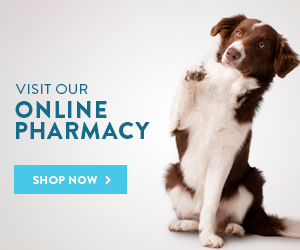Canine Parvo 101 at Laveen Veterinary Center
As the temperature begins to dip here in Phoenix to a more livable level, we notice an increase in the volume of infectious disease in our patients. This is likely due to the viability of bacteria and viruses in the environment and due to people and their animals being out and about.
“Parvo” is a term commonly referenced in animal shelters, dog parks and around the proverbial puppy water cooler. The public seems to have a general awareness of this disease; however, it remains unclear if the cause and effects are truly understood by most animal lovers.
While various forms of “parvo” exist, we’ll focus on the intestinal form as it’s the most common. Let’s start with the basics. Parvovirus is exactly as it’s named; a virus. It is passed from dog-to-dog via fecal-oral transmission. This doesn’t mean your dog needs to be eating large volumes of stool to become infected. Instead, just a trace amount of contaminated feces can cause severe disease. For instance, parvovirus can be brought into a home via souls of a shoe, be lapped up with an infectious swipe of a tongue or be introduced to a dog via a contaminated object such as a towel.
Parvovirus targets rapidly dividing cells including those in lymph nodes, bone marrow and the gastrointestinal tract. While signs and presentation vary, typically a dog will first either lose their appetite or begin vomiting. The diarrhea shortly follows and is often hemorrhagic (contains blood) which is the cause of the very distinct “parvo” odor. Dogs can quickly become dehydrated due to fluid losses. The lining of the intestinal tract becomes compromised and bacteria that’s normally only found in the gastrointestinal tract can then enter the bloodstream. This can cause severe illness once the bloodstream becomes infected with bacteria. Mortality rates can be as high as 90% if the disease is not treated early and effectively. The incubation period, time between infection and onset of clinical signs, is debatable but a commonly accepted timeframe is 3 to 7 days. This means dogs can be affected without owners knowing for up to a week. Meanwhile, their infective stool contaminates the local environment if owners aren’t conscientious about scooping poop. Even worse, a dog can continue to actively shed the virus in their stool for 2 to 3 weeks following infection.
“Gold standard” treatment includes aggressive IV fluid therapy, anti-nausea and antacid medications as well as antibiotics and pain management. The average hospital stay is 3-7 days dependent on severity of disease.
The good news is parvovirus is one of a select few diseases that can be prevented with vaccination. Since puppies are most susceptible, it’s very important all puppies are appropriately vaccinated by a veterinarian at 8, 12 and 16 weeks of age (if your pup does not fall into this age schedule, call Laveen Veterinary Center to establish a custom vaccination protocol with one of our vets). While no vaccine is 100% guaranteed, it is rare for a dog to become ill with parvovirus when appropriately vaccinated as a puppy and with subsequent adult boosters. So, if you have the joy of welcoming a new puppy to your home, ensure their protection from parvovirus with a complete set of puppy vaccines. The simple step of vaccination will help facilitate a long and healthy life complete with endless tail wags and tongue baths!
Dr Page Mader
Laveen Veterinary Center


